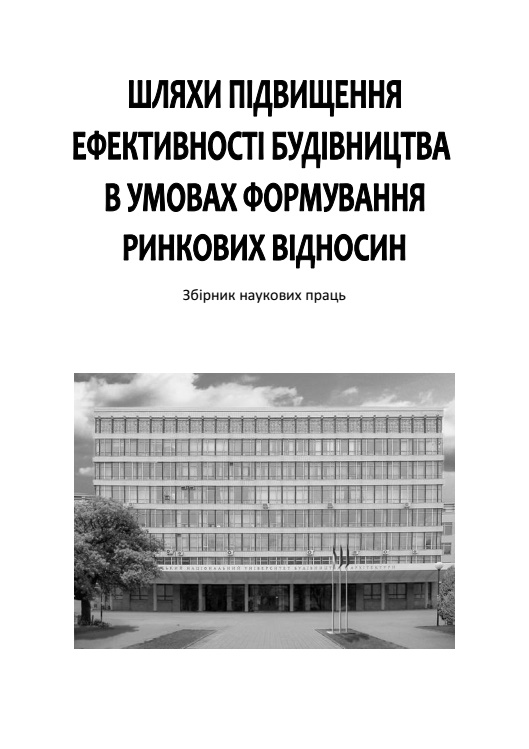Personnel management of construction companies
DOI:
https://doi.org/10.32347/2707-501x.2021.47(2).33-39Keywords:
personnel management, construction, construction enterprises, construction and installation works, construction staffingAbstract
This article discusses the features of construction as an industry, identifies factors that affect the process of personnel management of construction companies in modern conditions. Differences in the organization of the construction process from the production process in other industries are identified, taking into account the specifics of innovative development of the construction industry and staffing requirements, taking into account trends in the industry. Trends in the labor market in construction are shown, foreign and domestic experience in the development of supply and demand in the labor market is analyzed, taking into account the requirements for education, age, level of training. It is concluded that the personnel management system of a modern construction company should take into account the peculiarities of the construction industry, its current problems and global trends in approaches to personnel management. It is determined that in modern conditions the personnel management system of the enterprise takes into account both material and moral motivation, the main components of the motivational process are analyzed, the influence of certain types of motivation on different groups of personnel. The article defines that currently the main component of personnel management of the enterprise is the creation of conditions for the expansion of knowledge, training, skills development and continuous development of employees. The growing role of knowledge in society, the development of science-intensive, intelligent technologies requires flexible and adaptive use of human resources of the construction company, increasing the creative and organizational activity of employees, the formation of a humanized organizational culture. In the conditions of market relations, introduction of new technologies into production, adequate methods of personnel development management, which are based on progressive approaches to the expansion of its competencies, acquire special significance. In view of this, in modern production there are problems of modernization of classical personnel management systems and the introduction of new management models focused on the continuous development of intellectual, cultural and creative potential of construction workers. From an economic point of view, the simultaneous influence of a number of factors on the development of personnel management creates certain contradictions. On the one hand, it is - reducing staff turnover, increasing the level of competencies, ensuring the growth of profits, on the other - significant costs for improving methods of personnel development management. This contradiction shapes the purpose and content of personnel development management tasks and approaches to solving them.
References
Портер М. Стратегія конкуренції. Методика аналізу галузей і діяльності конкурентів. К.: Основи, 1997, 389 с.
Strategic Human Resounrce Management / C. Fombrun, N. Tichy, M. Devanna. N.-Y.: Wiley, 1984.
Стратегічне управління персоналом підприємства в умовах сучасного розвитку ринку праці: монографія / І.Р. Бузько, О.В. Вартанова, Г.О. Надьон та ін. Луганськ: СНУ ім. В. Даля, 2009. 304 с.
Щербак В.Г. Управління персоналом підприємства. Харків: ХНЕУ, 2005. 220 с.
Гавкалова Н.Л. Классификация концепций управления персоналом / Н.Л. Гавкалова, В.Г. Соболєв // Бізнес-Інформ. – 2011. – № 9. – С. 168–171.
Єлісєєва О.К. Стимулювання в системі управління персоналом підприємств / О.К. Єлісєєва, Н.Г. Кутова // Бізнес-Інформ. – 2017. – № 4. – С. 388–392.
Назарова Г.В. Порівняльний аналіз політики наймання персоналу: найкращі світові та українські практики / Г.В. Назарова, К.Ю. Котляревська // Бізнес-Інформ. – 2011. – № 9. – С.168–171.
Downloads
Published
How to Cite
Issue
Section
License

This work is licensed under a Creative Commons Attribution 4.0 International License.
Authors who publish with this journal agree to the following terms:
- Authors retain copyright and grant the journal right of first publication with the work simultaneously licensed under a Creative Commons Attribution License that allows others to share the work with an acknowledgement of the work's authorship and initial publication in this journal.
- Authors are able to enter into separate, additional contractual arrangements for the non-exclusive distribution of the journal's published version of the work (e.g., post it to an institutional repository or publish it in a book), with an acknowledgement of its initial publication in this journal.
- Authors are permitted and encouraged to post their work online (e.g., in institutional repositories or on their website) prior to and during the submission process, as it can lead to productive exchanges, as well as earlier and greater citation of published work (See The Effect of Open Access).

